Explore the latest insights from top science journals in the Muser Press daily roundup, featuring impactful research on climate change challenges.
In brief:
Greasing the wheels of the energy transition to address climate change and fossil fuels phase out
The Global Renewable Energy and Sectoral Electrification model, dubbed ‘GREaSE’, has been developed by UniSA Associate Professor James Hopeward with three civil engineering graduates. The study is published in the open access Energies.
“In essence, it’s an exploratory tool, designed to be simple and easy for anyone to use, to test what-if scenarios that aren’t covered by conventional energy and climate models,” Assoc Prof Hopeward says.
Three Honours students – Shannon O’Connor, Richard Davis and Peter Akiki – started working on the model in 2023, hoping to answer a critical gap in the energy and climate debate.
“When we hear about climate change, we’re typically presented with two opposing scenario archetypes,” Assoc Prof Hopeward says.
“On the one hand, there are scenarios of unchecked growth in fossil fuels, leading to climate disaster, while on the other hand there are utopian scenarios of renewable energy abundance.”
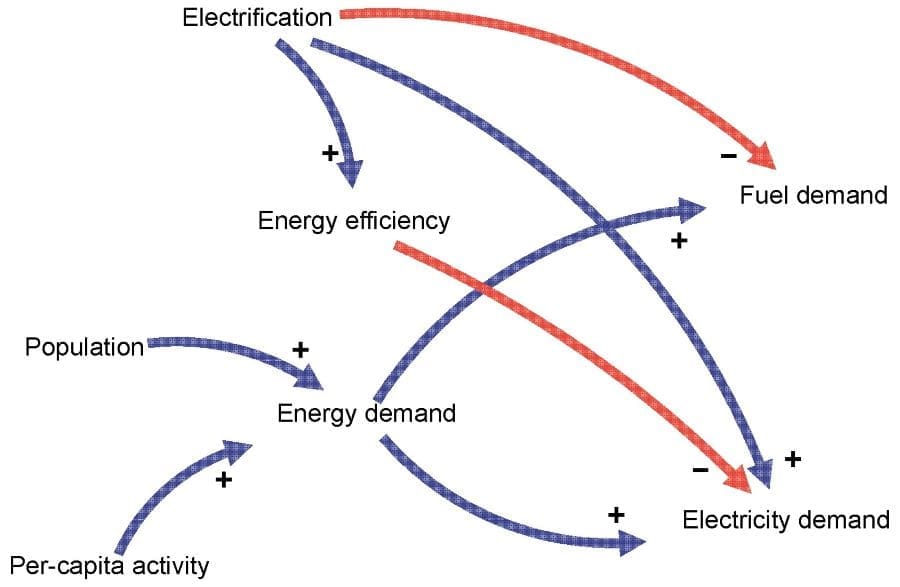
The students posed the question: what if the more likely reality is somewhere in between the two extremes? And if it is, what might we be missing in terms of risks to people and the planet?
After graduating, the team continued to work with Assoc Prof Hopeward to develop and refine the model, culminating in the publication of ‘GREaSE’ in Energies.
Using the model, the researchers have simulated a range of plausible future scenarios including rapid curtailment of fossil fuels, high and low per-capita demand, and different scenarios of electrification.
According to Richard Davis, “a striking similarity across scenarios is the inevitable transition to renewable energy – whether it’s proactive to address carbon emissions, or reactive because fossil fuels start running short.”
But achieving the rapid cuts necessary to meet the 1.5°C targets set out in the Paris Agreement presents a serious challenge.
As Ms O’Connor points out, “even with today’s rapid expansion of renewable energy, the modelling suggests it can’t expand fast enough to fill the gap left by the phase-out of fossil fuels, creating a 20 to 30-year gap between demand and supply.
“By 2050 or so, we could potentially expect renewable supply to catch up, meaning future demand could largely be met by renewables, but while we’re building that new system, we might need to rebalance our expectations around how much energy we’re going to have to power our economies.”
The modelling does not show that emissions targets should be abandoned in favour of scaling up fossil fuels. The researchers say this would “push the transition a few more years down the road”.
Assoc Prof Hopeward says it is also unlikely that nuclear power could fill the gap, due to its small global potential.
“Even if the world’s recoverable uranium resources were much larger, it would scale up even more slowly than renewables like solar and wind,” he says.
“We have to face facts: our long-term energy future is dominated by renewables. We could transition now and take the hit in terms of energy supply, or we could transition later, once we’ve burned the last of the fossil fuel. We would still have to deal with essentially the same transformation, just in the midst of potentially catastrophic climate change.
“It’s a bit like being told by your doctor to eat healthier and start exercising. You’ve got the choice to avoid making the tough changes now, and just take your chances with surviving the heart attack later, or you get on with what you know you need to do. We would argue that we really need to put our global energy consumption on a diet, ASAP.”
The researchers have designed the model to be simple, free and open source, in the hope that it sparks a wider conversation around energy and climate futures.
Journal Reference:
Hopeward, J., Davis, R., O’Connor, S., & Akiki, P., ‘The Global Renewable Energy and Sectoral Electrification (GREaSE) Model for Rapid Energy Transition Scenarios’, Energies 18 (9) 2205 (2025). DOI: 10.3390/en18092205
Article Source:
Press Release/Material by University of South Australia
Chip-shop fish among key seabed engineers
Convex Seascape Survey scientists assessed the role of fish in bioturbation (churning and reworking sediments) in shallow UK seas.
The Atlantic cod – a staple in chip shops – jointly topped the list of these important “ecosystem engineers” (along with Atlantic hagfish and European eel).
In total, 185 fish species were found to play a role in bioturbation – and 120 of these are targeted by commercial fishing.

“Ocean sediments are the world’s largest reservoir of organic carbon – so what happens on the seabed matters for our climate,” said University of Exeter PhD student Mara Fischer, who led the study. “Bioturbation is very important for how the seabed takes up and stores organic carbon, so the process is vital to our understanding of how the ocean absorbs greenhouse gases to slow the rate of climate change. Bioturbation is also important for seabed and wider ocean ecosystems. We have a good understanding of how invertebrates contribute to global bioturbation – but until now, we have been missing half the story. Our study is the first to attempt to quantify the bioturbation impact of fish, and it shows they play a significant, widespread role.”
Overfished and overlooked
Co-author Professor Callum Roberts, from the Centre for Ecology and Conservation at Exeter’s Penryn Campus in Cornwall, said: “We also found that species with the highest bioturbation impacts are among the most vulnerable to threats such as commercial fishing. Many of the largest and most powerful diggers and disturbers of seabed sediments, like giant skates, halibut and cod, have been so overfished they have all but vanished from our seas. These losses translate into big, but still uncertain, changes in the way seabed ecosystems work.”
The researchers examined records for all fish species living on the UK continental shelf, and found more than half have a role in bioturbation – sifting and excavating sediment during foraging, burrowing and/or building nests.
These different ways of reworking the sediments – termed bioturbation modes – alongside the size of the fish and the frequency of bioturbation, were used by the researchers to calculate a bioturbation impact score for each species.
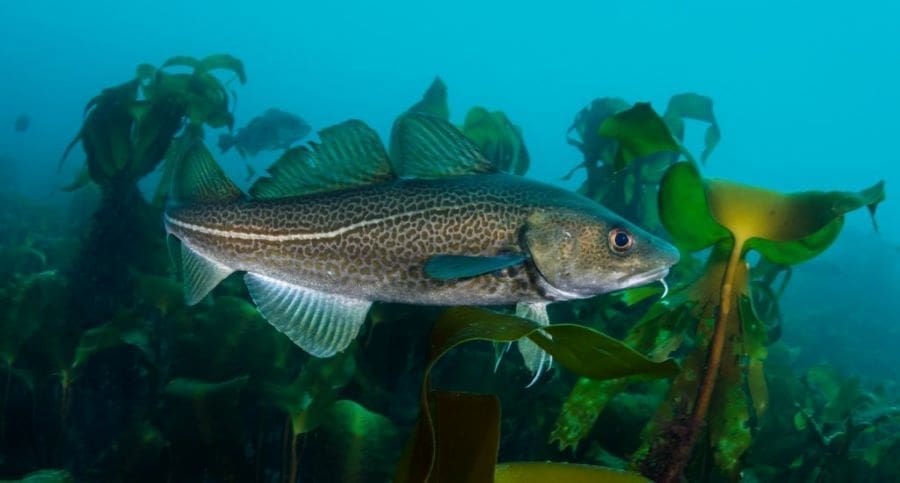
Examples include:
- European eel. Bioturbation mode: burrower. Bioturbation score (out of 125): 100. IUCN conservation status: critically endangered. Fished primarily using traps and fyke nets, they are considered a delicacy in many parts of Europe and Asia – commonly prepared as smoked eel or dishes like eel pie and eel soup. Threats include climate change, diseases and parasites, habitat loss, pollutants and fishing.
- Atlantic cod. Bioturbation mode: vertical excavator. Bioturbation score: 100. IUCN status: vulnerable. Primarily fished using trawling and longlining, they are consumed in many forms, including fish and chips, fresh fillets, salted cod, and cod liver oil. Threats include overfishing, climate change and habitat degradation. Populations have declined in several parts of its range, particularly the North Sea and West Atlantic.
- Common skate. Bioturbation mode: lateral excavator. Bioturbation score: 50. IUCN status: critically endangered. Historically targeted by trawling and longlining, this species is now protected in several regions – but often caught accidentally (bycatch). Numbers have drastically declined due to overfishing. The species is vulnerable due to its large size, slow growth rate, and low reproductive rate – only about 40 eggs are laid every other year, and each generation takes 11 years to reach maturity.
- Black seabream. Bioturbation mode: nest builder. Bioturbation score: 36. IUCN status: least concern. Primarily caught using bottom trawling, gillnets, and hook and line. Fishing during the spawning season in April and May can impact population replenishment. Bottom trawling at this time has the potential to remove the fish, nests and eggs.
- Red gurnard. Bioturbation mode: sediment sifter. Bioturbation score: 16. IUCN status: least concern. Historically not of major interest to commercial fisheries, the species has been targeted more in recent years (including in Cornwall). It is mainly caught by trawlers. There is currently no management for any gurnard species in the EU: no minimum landing size, no quota, etc – which could lead to unsustainable fishing.
Julie Hawkins, another author of the study, published in Marine Environmental Research, commented: “Anyone who has spent time underwater, whether snorkelling or diving, knows that fish are constantly digging up the seabed. It’s hard to believe that such an obvious and important activity has been largely overlooked when it comes to understanding ocean carbon burial.”
The Convex Seascape Survey is a partnership between Blue Marine Foundation, the University of Exeter and Convex Group Limited. The ambitious five-year global research programme is the largest attempt yet to build a greater understanding of the properties and capabilities of the ocean and its continental shelves in the Earth’s carbon cycle, in the urgent effort to slow climate change.
Journal Reference:
Mara Fischer, Ceri N. Lewis, Julie P. Hawkins, Callum M. Roberts, ‘A functional assessment of fish as bioturbators and their vulnerability to local extinction’, Marine Environmental Research online, 107158 (2025). DOI: 10.1016/j.marenvres.2025.107158
Article Source:
Press Release/Material by Alex Morrison | University of Exeter
Extreme rainfall: A long-standing hypothesis on temperature dependence finally settled?
Flash floods resulting from extreme rainfall pose a major risk to people and infrastructure, especially in urban areas. Higher temperatures due to global climate change affect continuous rainfall and short rain showers in somewhat equal measure. However, if both types of precipitation occur at the same time, as is typical for thunderstorm cloud clusters, the amount of precipitation increases more strongly with increasing temperature, as shown in a study by two scientists from the University of Potsdam and the Leibniz Centre for Tropical Marine Research (ZMT) in Bremen.
The study has just been published in the journal Nature Geoscience.
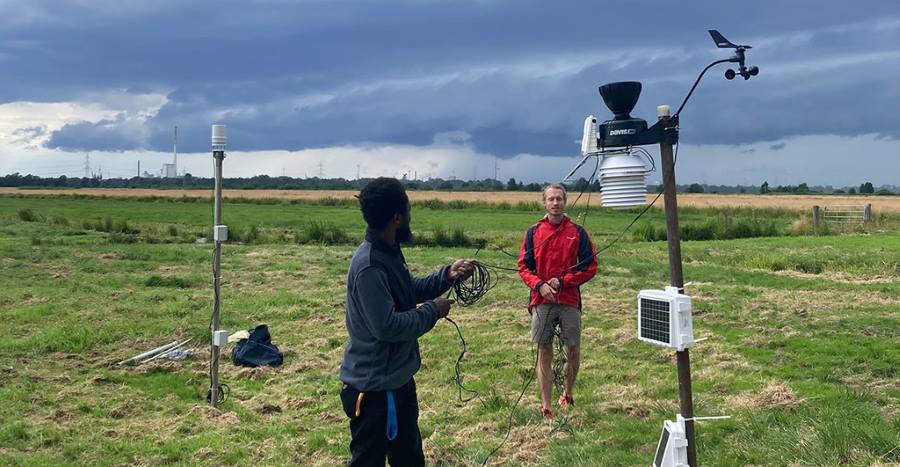
Extreme rainfall can cause rapid flooding, so-called “flash flooding”. How does such extreme rainfall change with temperature? This question has been studied for decades by using appropriate recordings of rainfall and temperature, measured at short intervals of one hour or less.
Rainfall and clouds form when the water vapor in the air saturates, thus forming small droplets that eventually lump together to form rain drops. According to the Clausius-Clapeyron relation, saturation requires roughly 7 percent more vapor when temperatures rise by one degree Celsius. This relation might, as an oversimplified image, be motivated by a sponge that can capture more water as temperatures increase. An extreme rainfall event in this image corresponds to squeezing the sponge to release most of its water.
This hypothesis had been challenged in 2008 by analysis of a long timeseries of rainfall data in the Netherlands. The authors of that study, Lenderink and van Meijgaard, concluded from their statistical approach that the Clausius-Clapeyron relation was insufficient to describe the increase in extreme rainfall, in particular that of thunderstorms which could increase at 14 percent per degree Celsius – thus twice the rate of Clausius-Clapeyron.
In the past 17 years the work by Lenderink and van Meijgaard, now cited more than 1000 times, has led to numerous investigations into the phenomenon, without being able to unambiguously confirm or reject the groundwork laid out by the Netherlands study. In particular, it was difficult to determine, in how far the blend of different rainfall types could give rise to statistical superpositions.
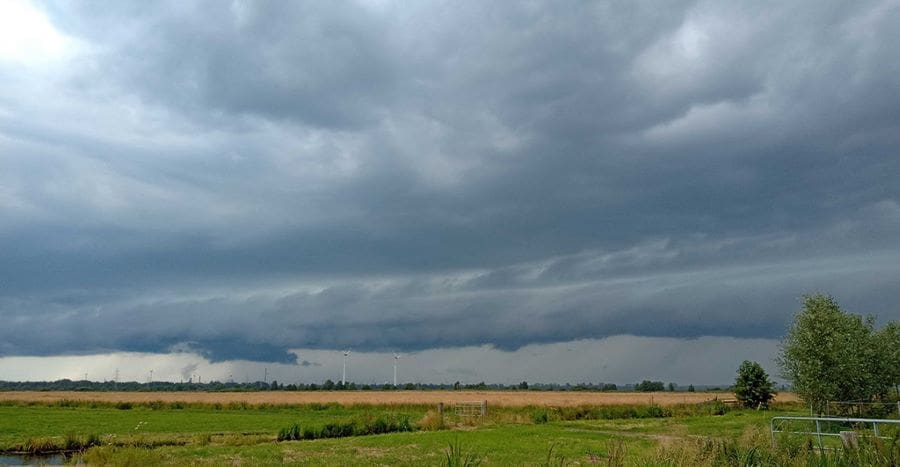
The current work takes a detailed look at two precipitation types: stratiform rainfall that is continuous and uniform in intensity compared to short rain showers typical for thunderstorms.
”We make use of a large and high-frequency dataset from Germany which is combined with a novel lightning detection dataset. Since lightning indicates thunderstorm activity, stratiform rainfall can be separated in this way,” explains Nicolas Da Silva from the University of Potsdam.
“The result is rather striking: when carefully selecting only clear thunderstorm rainfall and studying the extremes at each temperature, the increase is almost perfectly along the Clausius-Clapeyron theory,” adds Jan O. Härter from the University of Potsdam who is also affiliated with the Leibniz Centre for Tropical Marine Research (ZMT).
Equally, when selecting only for stratiform rainfall alone, the data fit the Clausius-Clapyron relation very well. Only when combining the statistics of both types of rainfall, much higher temperature increase rates emerge, as proposed in the study of Lenderink and van Meijgaard. The authors Da Silva and Härter state that this ’super-Clausius-Clapeyron’ increase is thus of purely statistical origin such that a long-standing controversy may now finally be settled.
However, the current study points out that the statistical ‘super-Clausius-Clapeyron’ increase in rainfall extremes does apply to clusters containing both thunderstorm and stratiform clouds. Such cloud clusters are responsible for most of the extreme flash flood inducing rainfall. “Assuming the temperature changes projected for the coming decades under climate warming, extreme rainfall may indeed reach unprecedented risk levels for humans and infrastructure, especially in urban areas,” the authors stress.
Journal Reference:
Da Silva, N.A., Haerter, J.O., ‘Super-Clausius–Clapeyron scaling of extreme precipitation explained by shift from stratiform to convective rain type’, Nature Geoscience (2025). DOI: 10.1038/s41561-025-01686-4
Article Source:
Press Release/Material by University of Potsdam
Geoengineering technique could cool planet using existing aircraft
Previously, most research has assumed that the technique, known as stratospheric aerosol injection, would be deployed in the tropics and so would require specially designed aircraft capable of flying at altitudes of 20 km or more to inject the particles.
For the new study, published in the journal Earth’s Future, scientists ran simulations of different aerosol injection strategies and concluded that adding particles 13 km above the polar regions could meaningfully cool the planet, albeit much less effectively than at higher altitudes closer to the equator. Commercial jets such as the Boeing 777F could reach this altitude.
Lead author Alistair Duffey, a PhD student at UCL’s Department of Earth Sciences, said: “Solar geoengineering comes with serious risks and much more research is needed to understand its impacts. However, our study suggests that it is easier to cool the planet with this particular intervention than we thought. This has implications for how quickly stratospheric aerosol injection could be started and by who.

“There are downsides to this polar low-altitude strategy. At this lower altitude, stratospheric aerosol injection is about one third as effective. That means that we would need to use three times the amount of aerosol to have the same effect on global temperature, increasing side effects such as acid rain. The strategy would also be less effective at cooling the tropics, where the direct vulnerability to warming is highest.
“However, climate change is a serious problem and it is vital to understand all our options, so that policy-makers have the evidence they need to make informed decisions.”
The researchers ran simulations in the UK’s Earth System Model 1 (UKESM1), a computer model of the climate, to estimate the impact of stratospheric aerosol injection. By adding sulphur dioxide – which goes on to form tiny reflective particles – at different altitudes, latitudes and seasons, they were able to quantify the effectiveness of different deployment strategies.
They said that low-altitude deployment of stratospheric aerosol injection could only work if it was done close to the Earth’s polar regions. To be effective, particles need to be created in the stratosphere, a layer of the atmosphere above the top of most clouds, and this layer is closer to the ground nearer to the poles.
In the troposphere – the lowermost layer of the atmosphere – any aerosol particles would disappear quickly as they are caught up in clouds and rained out. However, the stratosphere is dry, stable and free of clouds, meaning that added particles would stay up for months or years.
The researchers estimated that injecting 12 million tonnes of sulphur dioxide a year at 13 km in the local spring and summer of each hemisphere would cool the planet by around 0.6 °C. This is roughly the same amount added to the atmosphere by the eruption of the Mount Pinatubo volcano in 1991, which also produced an observable dip in global temperatures.
In the simulation, the sulphur dioxide was added at latitudes of 60 degrees north and south of the equator. That is roughly the latitude of Oslo in Norway and Anchorage in Alaska; in the south, that would be below the southernmost tip of South America.
This strategy is not as effective as injecting sulphur dioxide at 20 km because the particles do not stay in the stratosphere for as long, i.e., for only a few months at 13 km rather than for up to several years at 20 km.
However, a low-altitude strategy using existing aircraft could begin sooner than a high-altitude approach, with the researchers noting an earlier study finding that designing and certifying high-flying aircraft might take a decade and cost several billion dollars.
Co-author Wake Smith, a Lecturer at Yale School of the Environment, part of Yale University, said: “Although pre-existing aircraft would still require a substantial modification programme to be able to function as deployment tankers, this route would be much quicker than designing a novel high-flying aircraft.”
The strategy is not a quick fix – any stratospheric aerosol injection would need to be introduced gradually, and reduced gradually, to avoid catastrophic impacts from sudden warming or cooling. Nor would it eliminate the need for emissions reductions.
Co-author Dr Matthew Henry, of the University of Exeter, said: “Stratospheric aerosol injection is certainly not a replacement for greenhouse gas emission reductions as any potential negative side effects increase with the amount of cooling: we can only achieve long-term climate stability with net zero.”
***
The study received funding from the UK’s Natural Environment Research Council (NERC).
Journal Reference:
Duffey, A., Henry, M., Smith, W., Tsamados, M., & Irvine, P. J., ‘Low-altitude high-latitude stratospheric aerosol injection is feasible with existing aircraft’, Earth’s Future 13, 4: e2024EF005567 (2025). DOI: 10.1029/2024EF005567
Article Source:
Press Release/Material by University College London (UCL)
Study reveals how Tasman Sea temperatures influence Antarctic peninsula warming
The Antarctic Peninsula, one of the fastest-warming regions on Earth, has seen temperatures rise five times faster than the global average in recent decades. Extreme heat events, such as the record-breaking 20.8 °C recorded at Seymour Island in February 2020, have raised urgent questions about the drivers behind these dramatic changes.
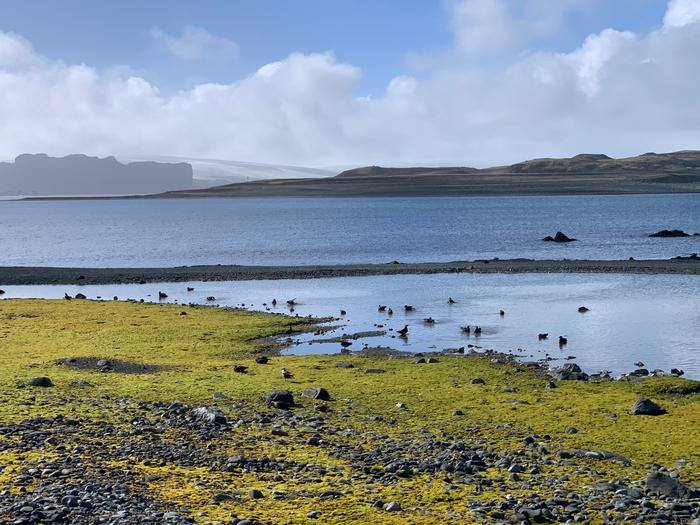
A new study led by Dr. Fei Zheng at Sun Yat-sen University sheds light on a surprising connection: winter sea surface temperatures (SST) in the Tasman Sea, located between Australia and New Zealand, play a key role in influencing Antarctic Peninsula temperatures. The findings, published in Advances in Atmospheric Sciences, reveal how mid-latitude ocean conditions can trigger far-reaching atmospheric waves that impact polar climates.
“Our research shows that warmer or cooler temperatures in the Tasman Sea can send a climatic ‘ripple effect’ across the Pacific, ultimately warming the Antarctic Peninsula,” explains Dr. Zheng. “However, not all climate models capture this link accurately—higher-resolution models do a much better job.”
The study found that higher-resolution climate models more realistically simulate the atmospheric wave train (known as the Pacific-South American pattern) triggered by Tasman Sea SST changes. Lower-resolution models showed greater inconsistencies, leading to less reliable projections.
That being said, there’s also shortage with high-resolution models. While they accurately reproduced long-term warming trends, they tended to overestimate year-to-year temperature variability in the Antarctic Peninsula while underestimating variability in the Tasman Sea itself. This imbalance may cause models to exaggerate how strongly the atmosphere responds to ocean changes.
Understanding the Tasman-Antarctica connection helps scientists refine climate predictions for the vulnerable Antarctic Peninsula, where rapid ice melt contributes to global sea-level rise. The study also highlights the need for improved model accuracy, particularly in simulating ocean-atmosphere interactions.
Journal Reference:
Wang, R., Zheng, F. & Wang, H., ‘Influence of Winter Tasman Sea SST on the Antarctic Peninsula: A Perspective from Historical Simulations’, Advances in Atmospheric Sciences (2025). DOI: 10.1007/s00376-024-4350-0
Article Source:
Press Release/Material by Institute of Atmospheric Physics (IAP) | Chinese Academy of Sciences (CAS)
Featured image credit: Gerd Altmann | Pixabay




